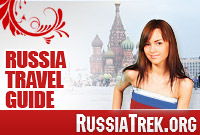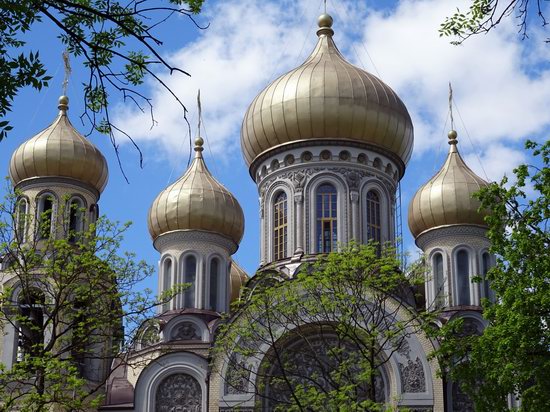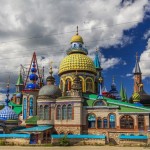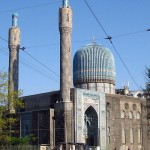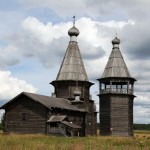1
The Evolution of Religion in Russia: What Does it Look Like Today?
No comments · Posted by Alex Smirnov in Religion
Russia has gone through a religion upheaval over the past century – from one extreme to the next. Learn all about it and the state of religion in Russia in today.
The population of Russia sits well over 142,000,000 people. Of that population, there are five “traditional” religious groups. These include Christians, Muslims, and Jewish people. While it’s recognized as a multi-faith nation today, religion in Russia hasn’t always been so free.
Russian religion has historically waxed and waned according to the political structures of the time. It’s a complex history that anybody interested in Russia should know more about. Whether you’re a history buff or a general fact fanatic, the facts surrounding religion in Russia make for an incredible story. Keep reading to learn more.
Politics and Religion in Russia
In the 19th century, conservative Orthodoxy ruled Russia and a large majority of its citizens. But in the 20th century, it had become one of the world’s largest promoters of atheism. Today, it’s a nation of many faiths and religious groups.
Throughout its history, so much of Russia’s religion has depended on political circumstances. From Orthodoxy to atheism and back to Orthodoxy, we described this in more detail below.
Orthodoxy
In 987, Vladimir the Great consulted with his boyars about the faiths in neighboring nations. They decided to send envoys to study these religions after various representatives had come looking to convert the political leader.
When those envoys arrived in Constantinople, in present-day Turkey, the festival ritual of the Byzantine Church impressed him. This ultimately led Vladimir to adopt Christianity.
In 988, Russia adopted Christianity as the faith of Russia and in a ceremony involving Byzantine rites. This laid the foundation for the rise of the Russian Orthodox Church. A Church that would dominate Russia’s religious life for 1,000 years after.
Communism
In 1917, the Marxist Vladimir Lenin came to power in Russia. He believed that religion would become far less important, if at all when capitalism was abolished and communism reigned.
To help speed that transition along, the Soviets forced the Orthodox Church to forfeit its property and for monks to leave their monasteries. And although religious freedom was guaranteed under the constitution, religious activities were severely restricted.
Christian beliefs were permitted during World War II in order to fight fascism. But following the war, those same restrictions were imposed again. Christianity was limited and atheism was promoted as the way to social and economic equality.
Religious Freedom
It wasn’t until the 1980s that religious freedom began to flourish. Mikhail Gorbachev adopted a policy called glasnost, or openness. This policy tolerated the practice of religion to a greater extent.
But it wasn’t until the Soviet Union dissolved in the early 1990s that religious freedom was a reality for the country. This is when it became clear that, despite the propagation of atheism, a majority of citizens had held onto their faiths.
Religion in Russia Today
Following the dissolution of the Soviet Union, two-thirds of Russians claimed to be atheists or to have no religious affiliation. But today, as many as 71% identify as members of the Russian Orthodox Church – the very same Church that started under Vladimir the Great in the 10th century.
But, partly a result of the many ethnicities residing in what we now know as Russia, the country is actually multi-faith. While the Orthodox Christians make up the majority of the population, there’s also a sizable population of Muslims, Jews, Buddhists, and adherents of other faiths. And 8% still considered themselves atheists.
Orthodoxy
Russia is home to over 5,000 Russian Orthodox churches. Since the dissolution of the Soviet Union, many of those churches and monasteries have been returned to the Church, restored, and open for religious worship.
This includes the St. Daniel Monastery, which is the current seat of the Moscow Patriarchate – an interesting place to visit on mission trips.
Other Christians
Though their numbers are far less numerous, there is a good deal of other Christians living and practicing in Russia. This includes a faction that separated from the Russian Orthodox church in the 17th century, known as the Old Believers.
There are also Baptist and Evangelicals, Catholics, and Lutherans – though the latter two mainly live outside of Russian these days.
Islam
Approximately 5% of the Russian population is Islamic. In numbers, that’s the equivalent of 19 million Russians. This is the second-largest religious group in the country, and they have more than 800 mosques and parishes around the country.
Buddhism
There are almost 200 monastic bodies related to Buddhism in Russia and ten datsan monasteries. The Buddhist population is mostly found in specific regions along the eastern borders, including Chita, Tuva, Irkutsk, Kalmykia, and Buryatia.
Judaism
Throughout the history of the country, Jews have suffered greatly. They’ve been discriminated against under many political leaders and oppressive structures.
This includes the purges of Jewish communities that took place in the 19th century, repression under Joseph Stalin from the mid-1920s until the early 1950s. They also suffered a great deal at the hands of Nazi atrocity on Russian soil during the Second World War.
Glasnost under Mikhail Gorbachev gave more room to practice religion openly. But the 1980s also permitted huge waves of Jewish emigration. Before the breakup of the Soviet Union, the Russian Jewish population numbered in the millions. That number greatly decreased after emigration.
Today, Russia has approximately 42 Jewish communities, with many concentrated in Moscow. In fact, Moscow is home to more than 10% of the Russian Jewish population.
What Is Russian Religion?
There is no single religion in Russia. The religion in this country has changed along with political leaders and circumstances. Russian religion started out as Orthodox under Vladimir the Great, became atheist under communist rule, and today it’s multi-faith.
Visitors to this country will find that religion is a big part of Russian life, regardless of what that religion is. And no matter what faith you might practice, you’ll be welcome in a country as diverse as this. To learn more about Russia, browse the rest of this site.
Tags: No tags
You might also like:
<< Arkhangelsk – the view from above
